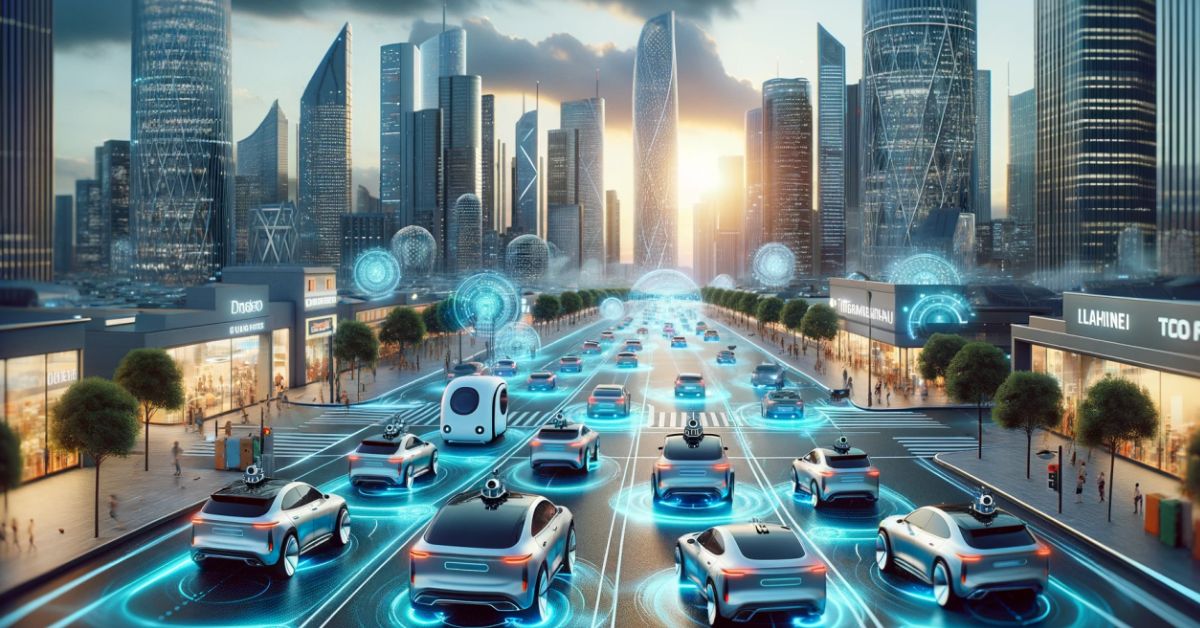The future of transportation is being redefined by artificial intelligence (AI). Once confined to the pages of science fiction, autonomous mobility is now becoming a reality—powered by advanced algorithms, deep learning, real-time data analytics, and machine vision. From self-driving cars to autonomous drones and delivery robots, AI is the engine driving the next generation of mobility solutions.
As we stand on the brink of a transportation revolution, it’s worth exploring how AI is shaping autonomous mobility and what this means for society, industries, and the environment.
AI at the Core of Autonomy
At the heart of every autonomous vehicle lies a sophisticated AI system. These systems are responsible for a wide range of critical tasks:
- Perception: AI enables vehicles to “see” the world around them using a combination of sensors such as LiDAR, radar, GPS, and cameras. Computer vision algorithms interpret visual data to identify lanes, traffic signs, pedestrians, and obstacles.
- Decision-Making: Machine learning models help vehicles make split-second decisions. Should the car change lanes? Is it safe to overtake? Should it slow down for a pedestrian crossing? AI analyzes real-time data, historical behavior, and environmental context to make these choices.
- Path Planning and Control: Once a decision is made, AI determines the most efficient and safest path to follow. It then communicates with the vehicle’s control systems to execute precise maneuvers.
Without AI, the dream of safe and scalable autonomous transportation would remain impossible.
Real-World Applications
Autonomous mobility isn’t just about self-driving passenger cars. AI is enabling a wide array of applications across multiple sectors:
1. Urban Transportation
Companies like Waymo, Tesla, and Cruise are deploying AI-driven vehicles in urban settings. These cars can navigate complex traffic patterns, interact with pedestrians, and adapt to dynamic environments.
AI also plays a role in smart traffic management systems. By analyzing traffic flows, these systems can optimize signals and reduce congestion, supporting both autonomous and human-driven vehicles.
2. Logistics and Delivery
AI is revolutionizing last-mile delivery through autonomous delivery robots and drones. Companies like Starship Technologies and Amazon Prime Air are using AI to navigate sidewalks, avoid obstacles, and deliver goods safely and efficiently.
In logistics, autonomous trucks powered by AI are reducing the need for long-haul drivers and increasing delivery efficiency. This is especially valuable in regions facing driver shortages.
3. Public Transit
AI is being used to pilot autonomous buses and shuttles in cities worldwide. These vehicles can operate on fixed routes or adapt to demand, reducing operational costs and increasing accessibility in underserved areas.
Key Technologies Driving AI in Mobility
Several technological advancements are making AI-driven autonomy possible:
- Deep Learning: Neural networks trained on massive datasets can recognize objects, predict human behavior, and adapt to novel scenarios.
- Edge Computing: To reduce latency, many autonomous systems process data locally using edge computing devices. This enables real-time decision-making even when network connectivity is poor.
- 5G Connectivity: High-speed, low-latency networks support real-time communication between vehicles (V2V) and infrastructure (V2I), enhancing situational awareness and safety.
- Simulation and Digital Twins: AI systems are trained in virtual environments using simulations that mimic real-world conditions. These digital twins help developers test scenarios that would be difficult or dangerous to recreate in real life.
Challenges and Ethical Considerations
Despite the rapid progress, several challenges remain:
- Safety and Regulation: Ensuring that AI-driven vehicles can operate safely under all conditions is a monumental task. Regulatory frameworks must evolve to address liability, safety standards, and public trust.
- Bias and Fairness: AI systems can inherit biases from training data, leading to unequal treatment of pedestrians, cyclists, or people in underrepresented areas. Developers must prioritize fairness and inclusivity in AI training.
- Privacy: Autonomous vehicles collect vast amounts of data about passengers and surroundings. Ensuring data privacy and cybersecurity is essential.
- Public Acceptance: While technology might be ready, public perception remains a barrier. People must trust autonomous systems before widespread adoption can occur.
A Future in Motion
The future of autonomous mobility is not a distant dream—it’s unfolding today. AI is enabling smarter, safer, and more efficient transportation solutions that have the potential to reshape entire industries and cities. From reducing traffic fatalities to lowering emissions and increasing accessibility, the benefits of AI-driven mobility are immense.
However, this future must be guided thoughtfully. Policymakers, engineers, urban planners, and communities must work together to ensure that autonomous mobility is safe, inclusive, and beneficial for all.

